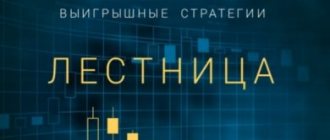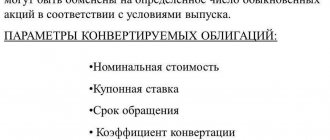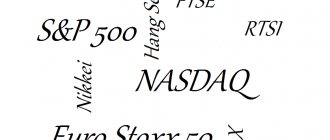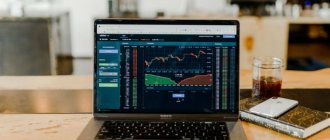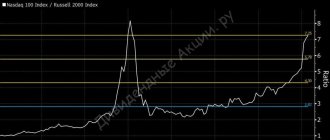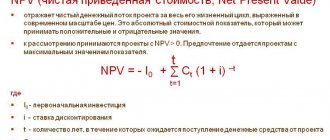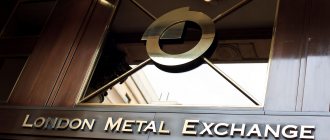Dividend investing is a strategy that gives investors two sources of potential income: predictable income from regular dividend payments and capital appreciation over time due to the appreciation in value of the shares themselves.
Buying dividend stocks can be a great solution for investors seeking income or for those who simply want to grow wealth by reinvesting dividends.
This is a great option for those investors who are looking for a less risky investment, which is often associated with dividend stocks. But there are certain difficulties in the chosen direction, because Some dividend stocks can be risky, especially if you don't have basic stock selection skills.
Maximum dividend yield
The simplest and most obvious strategy is to choose stocks with the highest dividend yield. To do this, you simply need to divide the dividend amount by the share price. For example, if the dividend is 20 rubles, and the share costs 120, then the dividend yield is 0.166 or 16.6%.
The higher the dividend yield, the better - not only will you earn more per unit of capital, but you will actually be able to buy an undervalued share. Why?
The size of dividends greatly affects the price of shares - when a company announces large payments, its quotes fly up.
A good example is the shares of Nizhnekamskneftekhim. When dividends are paid, the value of the shares falls as investors begin to sell them - this is called a dividend gap. The size of the gap is usually equal to the dividends, and the company can win it back for quite a long time - up to several months or even years.
Therefore, if the dividends are high, and the stock is cheap relative to them, then it is likely to grow. The closer the div payment date is, the more expensive the stock is.
The normal dividend yield in Russia is considered to be 8-10% per annum. If the ratio is higher, then the stock is undervalued. If it’s less, it’s overrated.
However, we live in Russia, and here anything can affect dividend payments. For example, AFK Sistema is actively pumping dividends out of MTS in order to pay off Rosneft. If not for this, it is unknown what payments the operator would make.
Therefore, carefully analyze why the issuer has such a dividend yield and whether there is anything unpresentable hidden behind the payments. Well, or temporary.
If you are buying stocks with the intention of holding them for several years, then you need to include in your investment portfolio securities with constant returns that are growing steadily. For example, something from the US dividend aristocrats or Russian blue chips.
Don't guess the future
When making specific trading and investment decisions, you need to focus on facts. Nobody knows what will happen to the dividend policy of a particular company in 2-3 years. The same Lukoil and MTS may become outsiders from leaders. If these issuers cut their dividends several times, they will no longer be so interesting.
The opposite situation is also possible. A company with a modest dividend history will begin to generously reward its own shareholders.
For example, consider the situation with dividend payments of PJSC Aeroflot. So, in 2002 they amounted to 6 kopecks per share. There were periods during which the issuer did not pay dividends at all. But for 2021, the amount of payments amounted to 17.5 rubles per share. Thus, over a decade and a half, dividends have increased almost 300 times.
What does this mean? Avoid stereotypes and dogmas. Analyze the facts and make a decision based on the current state of affairs.
Dogs Doe
One of the simplest dividend strategies. Its essence is as follows:
- download some screener;
- We sort by the maximum value of dividend yield;
- We include the first 10 positions in our portfolio in an equal position.
For example, for the Russian stock market the first 10 positions look like this:
- Khimprom – 29.51%;
- Nizhnekamsneftekhim – 28.57%;
- Alrosa-Nyurba – 21.28%;
- Bashneft – 15.11%;
- Severstal - 14.98%;
- IDGC (Center) – 14.48%;
- IDGC (Volga) – 14.44%;
- Enel – 13.49%;
- Astrakhan Electric Power Supply Company – 13.19%;
- Aeroflot – 13.12%;
- NLMK – 13.07%.
An attentive reader noticed that there are 11 positions on the list, not 10. The fact is that IDGC of Volga and Center are one office, and there is no point in taking both shares, it is better to choose one.
And here’s another interesting article: 27% per annum dividends from Nizhnekamskneftekhim: but is it worth buying shares?
Next, this list needs to be checked for strength. And then it turns out that Khimprom and Astrakhan Electric Power Company are completely illiquid. NKNK will no longer pay such dividends. And Alrosa is too expensive - one share costs 62,600 rubles, and is unlikely to be affordable for most novice investors. And the imbalance will be large - the remaining shares will have to be purchased for a similar amount, and the entire portfolio will amount to 6.2 million rubles.
Therefore, we supplement the list with 4 more items:
- Alrosa (not Nyurba!) – 12.36%;
- MGTS – 12.16%;
- Magnitogorsk met. plant – 12.01%;
- LSR Group – 11.64%.
Here, liquidity is all right, and prices are decent. So choose the Dogs of the Dow wisely, and don’t rush to the most profitable stocks!
Portfolio rebalancing
One of the advantages of a long-term dividend strategy is that it does not require a significant investment of time from the investor. This is an obvious plus. Yes, you need to spend some time choosing stocks for investment. But in the future, the investor should only occasionally analyze the structure of the assembled portfolio.
Nevertheless, it is necessary to do this. If some securities have risen in price significantly, then their share in the portfolio will increase significantly, which is not welcomed by the rules of risk management. In such a situation, the optimal solution seems to be selling part of these shares.
By acting in this way, the investor, firstly, will lock in a good profit. Secondly, it will bring the state of the dividend portfolio to the initially selected proportions.
By the way, the profit received can be put back into business by purchasing new shares for which high dividends are expected.
Flying Five Higgins
If the Dogs of the Dow were named after the index, then the Flying Five was named after a certain Higgins, an investor and analyst. This strategy is also sometimes called the “Big Five”. Well, that's not the point.
The Flying Five are modified Dogs. The essence of this dividend strategy is to select the 5 cheapest ones from the most profitable stocks. The reason for this is significant: inexpensive stocks, all other things being equal, have greater growth potential than large ones. It’s easier to go up in price from 1 ruble to 2 shares than from 4 to 5.
On the other hand, big divas usually pay for stable growing companies, and the share price will depend on the business of the organization, and not on its quotes.
But in any case, there is such a strategy. If we sort our Dogs and discard illiquid assets, we get the following Flying Five:
- IDGC Center;
- Enel;
- Magnitogorsk met. plant;
- Alrosa;
- Aeroflot.
But don’t forget that shares are traded in lots, and you won’t be able to buy MRSK for 27 kopecks. There are 10 thousand shares in the lot, and the purchase will cost at least 2,700 rubles.
Advantage of reinvestment programs
Dividend investors often reinvest the money they receive from a company into its own shares. This is a reasonable approach. At the same time, you should not mechanically buy securities at market value at the next trading session. Check to see if the issuer in question has plans to implement a reinvestment program. Let's understand what it is.
A reinvestment program is a special offer from a company under which an investor can use the dividends received to purchase shares at a premium relative to current stock exchange prices.
Simply put, the issuer offers its shareholders special conditions for the purchase of a new block of shares. As a result, both sides benefit.
Unfortunately, today such programs are not popular among domestic companies. But on the US market, where Russian investors also have access, they are represented quite widely. In the American stock exchange tradition, these programs are called Dividend Reinvestment Plans. In particular, they are actively used by such companies as Walt Disney and Caterpillar.
Trading on the news
This strategy is for experienced traders. Not suitable for passive investing. The bottom line is to implement the classic maxim: “Buy on rumors, sell on news!”
This is how you need to act. Usually, immediately after the announcement of dividends or on rumors that the company is going to announce good dividends, stock prices begin to rise. It is important to buy them at the very beginning of the movement, and then sell them without waiting for the payments themselves.
After the payments there is a dividend gap (you already know this), and after that the price may not reach the desired value for a long time. And the news strategy allows you to make money on the growth of the stock and at the same time remain in the cache.
You carry out a strategy with one stock, then look for the next one, carry out it again - and so on ad infinitum.
If you wish, you can shorten something if you missed the moment of lifting. So, if a stock is in a downtrend, then after the news is released the stock may rise and then continue to fall. And here you are with your shorts.
But keep in mind that you won’t be able to short shares before paying dividends and make money on the gap, since the broker forcibly closes short positions in such cases.
Don't forget to diversify risks
Trading in the stock markets is a risky way of investing. Any, even the most reliable company can suffer financial failure and go bankrupt. That is why the investor initially needs to accept this circumstance and mentally prepare for it.
Of course, when money is invested in large joint stock companies, the risk of bankruptcy is minimal. But still he exists.
This is why diversification is considered the most important principle when using a dividend investment strategy. You should invest money in shares of at least 5-6 companies. It would be better to increase this value to 10–12 issuers.
On the one hand, it is not easy to find so many companies that adhere to a dividend policy that is attractive to investors. On the other hand, this approach will minimize risks and is guaranteed to protect market participants from losing a significant part of their capital.
Remember, no matter how much you would like to invest all your funds in the shares of one company that pays the highest dividends on the market, this is prohibited!
Cash cows
The essence of the strategy is to buy those shares that are “milked” by the parent companies or a large shareholder.
For example, AFK Sistema receives large dividends from MTS and Etalon (and before the sale of its stake, it received dividends from Detsky Mir). AFK Sistema needs money to cover its debts, so it actively takes maximum available funds from its subsidiaries. Private investors can also take advantage of the situation and buy shares of “cash cows”.
Similarly, Bashneft acts as a “cash cow” for Rosneft, Russian government bonds are “cash cows” for the government (obliged to pay at least 50% of net profit under IFRS), REITs for the US Tax Service (pay 90% of profits in the form of dividends), etc. .
Here's another interesting article: Basic strategies for investing in stocks and bonds
Russian companies with stable dividends
Our market size is small compared to the US. The list of dividend stocks is modest compared to the US. The following companies can be distinguished:
- Tatneft ap;
- Gazpromneft;
- Lenenergo ap;
- Surgutneftegaz ap;
- LUKOIL;
- Rostelecom ap;
- MTS;
- GAZPROM;
- NLMK;
- Severstal;
- MMK;
- Enel Russia;
- NKNKh ap;
- Magnet;
- Rosneft;
- NOVATEK;
- Akron;
- MMC Norilsk Nickel;
- Tattelecom;
- Unipro;
- VTB;
- Sberbank ap;
- LSR;
- FGC UES;
- Rosseti ap;
- ALROSA;
- PhosAgro;
- Moscow Exchange;
- Child's world;
- SaratNPZ-p;
- TGC-1;
- OGK-2;
- RusHydro;
Investors who kept money in these companies have made great money over the past 10 years. Taking into account the reinvestment of payments, the average return was about 34% per year. This is if we are talking about a buy and hold strategy. This effect is achieved through compound interest.
Buying after a dividend gap
The strategy involves buying shares after a dividend gap. As a rule, after dividends, shares fall by the amount of payment - this especially often happens with annual or semi-annual dividends.
It can take several days or even months for a dividend gap to close, especially in low-volatility stocks. But for the purpose of long-term stock ownership, buying after the gap below fair value is a great idea.
Which dividend strategy did you like?
- Search for undervalued stocks with a high dividend yield of 34%, 12 votes
12 votes 34%12 votes - 34% of all votes
- Dogs of the Dow Jones 20%, 7 votes
7 votes 20%
7 votes - 20% of all votes
- Four fools 17%, 6 votes
6 votes 17%
6 votes - 17% of all votes
- Trading on news 14%, 5 votes
5 votes 14%
5 votes - 14% of all votes
- Flying Five 11%, 4 votes
4 votes 11%
4 votes - 11% of all votes
- Entry after gap 3%, 1 vote
1 vote 3%
1 vote - 3% of all votes
- Cash cows 0%, 0 votes
0 votes
0 votes - 0% of all votes
- Buying quasi-bonds 0%, 0 votes
0 votes
0 votes - 0% of all votes
Total votes: 35
23.04.2019
If you want to better understand how to invest in dividend stocks, what pitfalls await you along this path, I recommend that you read my course.
Thus, each dividend strategy has its own advantages and disadvantages. You should choose a strategy based on your financial capabilities and risk appetite. If you just want to earn income, then choose one of the passive strategies. If you want to take risks and earn above the market, you can prefer a news strategy. In any case, the choice is yours. Good luck, and may the money be with you!
Rate this article
[Total votes: 1 Average rating: 5]
American companies with stable dividends
The American list of dividend aristocrats is very long. However, their market is much larger, and the history of the exchange itself goes back more than 100 years.
- 3M Company;
- A. O. Smith Corporation;
- Abbott Laboratories;
- AbbVie, Inc.;
- ABM Industries Incorporated;
- Aflac Incorporated;
- Air Products and Chemicals, Inc.;
- Albemarle Corporation;
- Amcor PLC;
- American States Water Company;
- Aptargroup, Inc.;
- Aqua America, Inc.;
- Archer-Daniels-Midland Company;
- AT&T Inc.;
- Atmos Energy Corporation;
- Automatic Data Processing, Inc.;
- Bank OZK;
- Becton, Dickinson and Company;
- Black Hills Corporation;
- Brady Corporation Class A;
- Brown & Brown, Inc.;
- Brown-Forman Corporation Class B;
- CH Robinson Worldwide, Inc.;
- California Water Service Group;
- Carlisle Companies Incorporated;
- Caterpillar Inc.;
- CDK Global Inc;
- Chevron Corporation;
- Chubb Limited;
- Church & Dwight Co., Inc.;
- Cincinnati Financial Corporation;
- Cintas Corporation;
- Clorox Company;
- Coca-Cola Company;
- Colgate-Palmolive Company;
- Commerce Bancshares, Inc.;
- Community Bank System, Inc.;
- Consolidated Edison, Inc.;
- Cullen/Frost Bankers, Inc.;
- Donaldson Company, Inc.;
- Dover Corporation;
- Eaton Vance Corp.;
- Ecolab Inc.;
- Emerson Electric Co.;
- Essex Property Trust, Inc.;
- Expeditors International of Washington, Inc.;
- ExxonMobil Corporation;
- Fastenal Company;
- Federal Realty Investment Trust;
- Franklin Resources, Inc.;
- General Dynamics Corporation;
- Genuine Parts Company;
- H. B. Fuller Company;
- Hormel Foods Corporation;
- Illinois Tool Works Inc.;
- International Business Machines Corporation;
- J. M. Smucker Company;
- John Wiley & Sons, Inc. Class A;
- Johnson & Johnson;
- Kimberly-Clark Corporation;
- Kontoor Brands, Inc.;
- Lancaster Colony Corporation;
- Leggett & Platt, Incorporated;
- Lincoln Electric Holdings, Inc.;
- Linde plc;
- Lowe's Companies, Inc.;
- McCormick & Company, Incorporated;
- McDonald's Corporation;
- MDU Resources Group Inc;
- Medtronic Plc;
- Meredith Corporation;
- MSA Safety, Inc.;
- National Fuel Gas Company;
- National Retail Properties, Inc.;
- New Jersey Resources Corporation;
- NextEra Energy, Inc.;
- Nordson Corporation;
- Nucor Corporation;
- nVent Electric plc;
- Old Republic International Corporation;
- Pentair plc;
- People's United Financial, Inc.;
- PepsiCo, Inc.;
- Polaris Inc.;
- PPG Industries, Inc.;
- Procter & Gamble Company;
- Realty Income Corporation;
- RenaissanceRe Holdings Ltd.;
- RLI Corp.;
- Roper Technologies, Inc.;
- Ross Stores, Inc.;
- RPM International Inc.;
- S&P Global, Inc.;
- SEI Investments Company;
- Sherwin-Williams Company;
- Sonoco Products Company;
- Stanley Black & Decker, Inc.;
- State Street Institutional Liquid Reserves Fund;
- Sysco Corporation;
- T. Rowe Price Group;
- Tanger Factory Outlet Centers, Inc.;
- Target Corporation;
- Telephone and Data Systems, Inc.;
- TJX Companies Inc;
- UGI Corporation;
- United Bankshares, Inc.;
- United Technologies Corporation;
- VF Corporation;
- W. W. Grainger, Inc;
- Walgreens Boots Alliance Inc;
- Walmart Inc.;
- West Pharmaceutical Services, Inc.;
In addition to direct purchases of shares, among financial instruments in the United States there are dividend ETF funds:
- SDY - SPDR S&P Dividend ETF (quarterly payments);
- NOBL - ProShares S&P 500 Dividend Aristocrats (quarterly payments);
- HDV - iShares Core High Dividend ETF (quarterly payments);
- VIG - Vanguard Dividend Appreciation ETF (quarterly payments);
- PFF - iShares US Preferred Stock (PFF) (monthly payments);
In January 2021, an ETF fund for Russian dividend shares DIVD appeared on the Russian market. It represents an active managed mutual fund that copies the IRDIVTR index (INCOME Index of Dividend Stocks of the Russian Federation).
Strategy or speculation?
In the stock market, profit using dividend shares can be obtained in two ways:
- Increase in the market value of securities.
- Receiving dividends.
Ideally, it is better when both methods work and generate income for their owners.
You can engage in investing or speculation.
What's the difference?
An investor who buys dividend stocks expects to receive a constant cash flow from them. Annually. Plus, over time, the value of the shares will increase. But..... this is a long process, lasting years.
Speculators are trying to make money on short-term investments. And make money quickly. Here and now. Their horizon is from several days to a couple of months.
To illustrate this clearly, let’s use an example from life.
Stepan (speculator) buys a chicken for 100 rubles. The next day she brings him an egg. Stepan immediately sells both the chicken (for 100 rubles) and the egg (for 5 rubles). In total, he instantly earned 5% profit. The next day the pattern is repeated.
Ignat (investor) also buys a chicken for 100 rubles. But unlike Stepan, he doesn’t sell it. But only an egg. And so every time. If you remove the cost of poultry feed, then the net profit from one egg is, of course, no longer 5 rubles, but much less. But Ignat secured a constant profit for himself for a long time.
If Ignat decides not to sell the egg, but raises another chicken from it, then
- his capital will increase (two chickens are worth more than one) - we have an increase in market value;
- profit from the sale of eggs from two chickens will increase - high dividends as a result of business development.
Everyone decides for themselves what to do. Many factors influence this. Are you ready to constantly monitor profitable options? Or you don’t want to bother and invest according to the principle “the less often the better.”
It is impossible to say unequivocally which way of earning money is better (and more profitable). Some achieve phenomenal success in speculation. Others “raise” good money on long-term investments.
I advise: How to buy shares and receive dividends
Momentum investing
Momentum investors follow trends and waves. They invest in high-growth stocks when they are on an uptrend, and are ruthless about those assets that begin to fall in value or slow in growth. They believe that winners keep winning and losers keep losing. Impulse tactics are one of the most aggressive techniques.
Momentum investors are more of a technical analyst. This means that they take a highly focused approach to trading and look for patterns in stock prices to guide their buying decisions. In essence, the momentum strategy works contrary to the efficient market hypothesis. This hypothesis states that asset prices fully reflect all information available to the public. It is difficult to believe this statement and be a momentum investor, given that the strategy is aimed at capitalizing on undervalued and overvalued stocks.
Minuses
- High trading costs (on each trade the broker will have to pay a commission, which ultimately reduces the profitability of the portfolio)
- Unpredictability (Traders who follow this approach must always keep their finger on the pulse and be ready to buy and sell at any time).
- Profits grow over months, not years. This contrasts with simple buy and hold strategies, which take a holistic approach.
- In the long term, they are inferior in profitability to other investment strategies.
pros
- Suitable for short-term investment
- You can use the short selling method to increase portfolio profitability
- Short selling allows you to make money even when assets fall.

